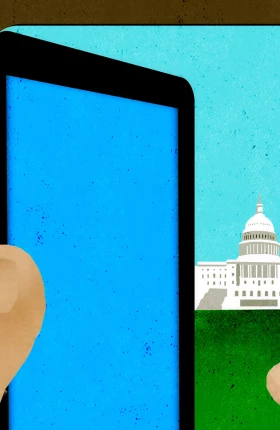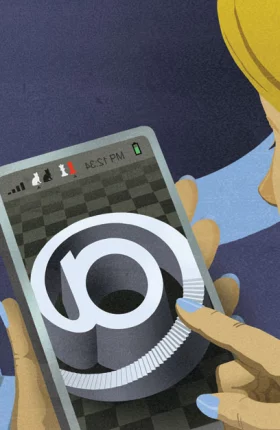More than a decade after the advent of iTunes, the first Google search, and the opening of Amazon’s virtual doors, U.S. consumers continue to do more and more online—and increasingly on their smartphones and tablets. In the process, they are deriving enormous satisfaction and significant value. But not nearly as much as they could—or would like to.
The early online pioneers helped set high expectations among users by offering intuitive interfaces, exciting experiences, expanded choice, near-total price transparency, and many other innovations that make interacting easy and fun. But consumers don’t necessarily differentiate between online-only businesses and those that straddle the physical and virtual worlds when deciding whether their expectations are being met. They give high marks to online merchants and media retailers—as well as to banks. They see travel companies and investment firms as trying hard and partly succeeding. They are frustrated by health care providers, government agencies, insurance companies, and telco and cable providers, among others—all of which they wish would provide a better online experience.
New research by The Boston Consulting Group shows that individual business sectors and segments vary widely in their ability to meet the expectations of U.S. consumers online, be it via PCs, smartphones, or tablets. The best segments provide three to four times the satisfaction of the worst.
Consumers expect companies in all sectors to provide the basics online—the ability to research products and services and to compare prices and options. When they are ready to make a purchase, they appreciate those businesses that make sealing the deal a safe and simple process. They value ongoing, easy-to-navigate interactions that remove the hassle from everyday life, especially from companies with which they interact frequently. They are quick to recognize companies that do a good job of satisfying these expectations—and just as quick to become exasperated by those that don’t.
Satisfaction drives value. The average connected consumer in the U.S. receives value of $2,250 a year from accessing companies online in the sectors we surveyed—a significant sum, but one that could nearly triple if all companies matched the best-in-class value delivered. Consumers receive almost six times as much value from companies in the top-performing sector (retail) as they do from poorer-performing ones, such as health care providers. They do not appreciate this disparity given their strong desire to have more and better online interaction with companies in the industries that are important to them, health care being a leading example. (For information about the survey, see “Methodology,” below.)
Methodology
The BCG Digital Satisfaction and Value Survey, conducted in March 2013, had 3,135 total respondents, including 2,242 respondents on satisfaction and 893 on value. The survey covered the following sectors (and segments): automobiles, finance (personal banking, investments, and insurance), government services, heath care, retail (apparel, electronics, media, online merchants, and supermarkets), real estate, travel (airlines and hotel), and utilities (telco and cable, electricity, gas, and water). We defined a connected consumer as someone accessing the Internet at least weekly and engaging with firms online across a range of sectors.
We investigated the value these consumers derive from digital access to companies and organizations in key business segments. Digital access was defined as use of a PC, smartphone, or tablet to perform certain actions: researching products and services (for example, comparing prices or checking the opening hours of a given store); transacting online (for instance, paying bills or buying a product); and engaging in post-transaction activities (including checking account balances or customer service communications). We specifically excluded the consumption of actual products and services online. The research methodology revealed how much consumers value digital access by asking them to trade Internet usage in the eight sectors for the opportunity to receive varying amounts of cash.
Consumers’ expectations are not stagnant, of course. Neither is technology. And the companies that don’t keep pace will see the gaps between consumer demand and their own offerings widen as mobile technology gains commercial traction and as users seek to do more on their smartphones and tablets.
In this report, BCG examines consumers’ satisfaction with companies’ efforts to add value through online and mobile channels. The analysis and findings suggest that while many companies are doing a good job at facilitating digital interactions, there is ample room for improvement. Even marginal progress in satisfaction in some sectors—health care and government services offer two glaring examples—could lead to huge increases in value. Companies still figuring out how to play at the online table face even higher stakes as mobile moves to the fore. For a large and growing share of users, especially younger users, the digital experience will be entirely mobile—a phenomenon that very few companies have adequately addressed and for which most are poorly prepared.





